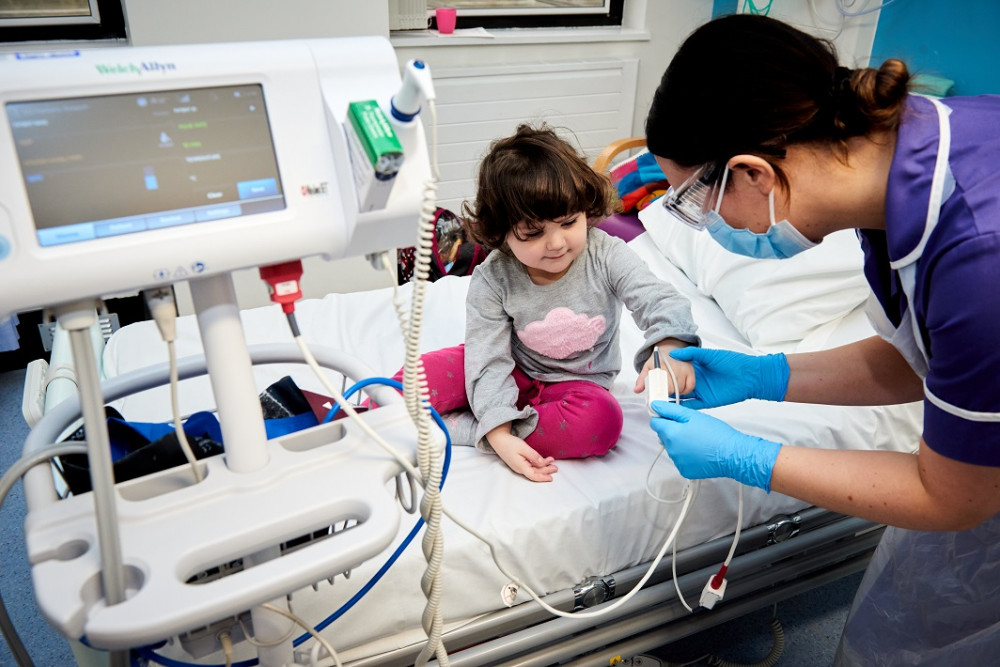
The Penn State Health Children's Hospital offers advanced radiology services. Whether you need a routine X-ray or a special PET scan, radiologists can be a valuable part of your child's medical team. Radiologists use X-rays and PET scans as well as computed tomography (CT), magnetic resonance imaging (MRI) and PET scans to diagnose and treat a variety of conditions.
Family-centered, family-centered care
Family-centered healthcare is built on the belief system that all children have the right and need to be provided with the best care. Integrating the family's needs into the care process helps practitioners provide better care for children and their parents. This approach also allows family members to participate in the decision making process. This ultimately improves everyone's quality of living. Family-centered practices promote children's well being and enhance the quality life.

Specialized staff
At UCSF Benioff Children's Hospital, radiologists specialize in pediatric imaging. The hospital's department of pediatric radiology is a top-rated one and offers children safe, high-quality medical care in a child-focused setting. Children's Health's radiology personnel also conducts radiology research and trains future radiologists to improve children's health around the world. Are you interested in working in pediatric radiology? Look at their website to find out more about radiology.
Open MRI
The open MRI at Children's Hospital of Philadelphia is a procedure that allows parents to be present with their child during the examination. The procedure is safe and children can wear a safety belt. They will lie on a machine-operated bed. While the procedure takes place, a technologist will inspect the child's bodies with a camera. They'll also take films or photographs of the child’s organs.
Sonography
Sonography is a key diagnostic tool used for diagnosing a variety of conditions. Children under five years of age can receive this type imaging. Children may experience some trauma, so the Hassenfeld Children's Hospital's staff and pediatric radiologists can provide gentle sedation. The pediatric radiology team also uses the least amount of radiation during the imaging process, which makes the experience more comfortable for your child.

Nuclear medicine
Nuclear medicine is a type of diagnostic imaging that involves the use of radioactive materials (known as radiopharmaceuticals) to examine organ functions and metabolism. These substances are injected through an IV and released energy, including Gamma Rays. The rays are captured by a camera that is specially designed to capture them. These images can be used to reveal the tissues and organs of the body. The results of these procedures can be very important for both patients and doctors.
FAQ
What are the primary functions of a healthcare system?
The health care system must offer quality services and adequate medical facilities at an affordable cost to people who have a medical need.
This includes providing preventive care, encouraging healthy lifestyles and the appropriate treatment. It also requires equitable distributions of healthcare resources.
What about the role of the private sector?
In delivering healthcare, the private sector is vital. The private sector provides some equipment for hospitals.
It pays some staff who work in hospitals. It makes sense that they should be involved in the management of the system.
There are however limitations to what they offer.
Private providers are not always able to compete with the free services offered by governments.
And they shouldn’t try to run it all. This could result in a system that isn't cost-effective.
Why do we have to have medical systems?
People in developing nations often do not have access to basic health care. Many people who live in these areas are affected by infectious diseases such as malaria and tuberculosis, which can lead to premature death.
People in developed countries get routine checks and see their general practitioners for minor ailments. But, many people still have chronic illnesses such as heart disease or diabetes.
What should you know about immunizations
Immunization refers the process of activating an immune response in response to a vaccine. The body produces antibodies (immunoglobulins), to protect itself against infection after receiving the vaccine.
What is the difference in public and private health?
In this context, the terms refer both to the decisions made and those of legislators by policymakers. These policies affect how we deliver healthcare services. It could be local, regional, or national to decide whether a new hospital should be built. The same goes for the decision whether to require employers provide health insurance. This can be done by local, national or regional officials.
Statistics
- About 14 percent of Americans have chronic kidney disease. (rasmussen.edu)
- The healthcare sector is one of the largest and most complex in the U.S. economy, accounting for 18% of gross domestic product (GDP) in 2020.1 (investopedia.com)
- Price Increases, Aging Push Sector To 20 Percent Of Economy". (en.wikipedia.org)
- Over the first twenty-five years of this transformation, government contributions to healthcare expenditures have dropped from 36% to 15%, with the burden of managing this decrease falling largely on patients. (en.wikipedia.org)
- For instance, Chinese hospital charges tend toward 50% for drugs, another major percentage for equipment, and a small percentage for healthcare professional fees. (en.wikipedia.org)
External Links
How To
What are the four Health Systems?
Healthcare systems are complex networks of institutions such as hospitals and clinics, pharmaceutical companies or insurance providers, government agencies and public health officials.
The goal of this infographic was to provide information to people interested in understanding the US health care system.
These are some key points.
-
The GDP accounts for 17% of healthcare spending, which amounts to $2 trillion annually. It's nearly twice the size as the entire defense budget.
-
Medical inflation reached 6.6% for 2015, more than any other category.
-
Americans spend on average 9% of their income for health care.
-
As of 2014, there were over 300 million uninsured Americans.
-
Although the Affordable Healthcare Act (ACA), was passed into law, implementation has not been completed. There are still major gaps in coverage.
-
A majority of Americans believe that there should be continued improvement to the ACA.
-
The United States spends more on healthcare than any other country.
-
Affordable healthcare for all Americans would reduce the cost of healthcare by $2.8 trillion per year.
-
Medicare, Medicaid, and private insurers cover 56% of all healthcare spending.
-
People don't have insurance for three reasons: they can't afford it ($25 Billion), don’t have enough time to search for it ($16.4 Billion), and don’t know about it ($14.7Billion).
-
There are two types of plans: HMO (health maintenance organization) and PPO (preferred provider organization).
-
Private insurance covers most services, including doctors, dentists, prescriptions, physical therapy, etc.
-
Public programs provide hospitalization, inpatient surgery, nursing home care, long-term health care, and preventive services.
-
Medicare is a federal program that provides senior citizens with health coverage. It covers hospital stays, skilled nursing facility stay, and home healthcare visits.
-
Medicaid is a joint federal-state program that provides financial assistance for low-income individuals or families who earn too little to qualify for other benefits.